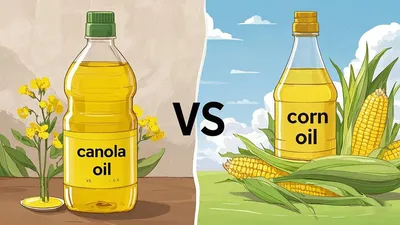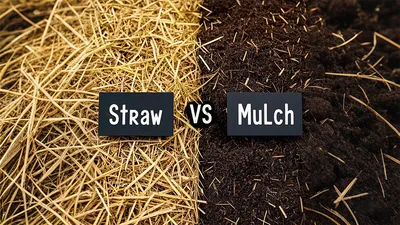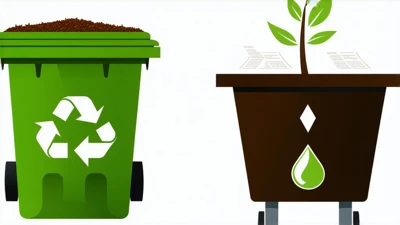
Comparison Table
| Category | Sub-Item | Bamboo Toothbrush | Electric Toothbrush | Notes |
|---|---|---|---|---|
| Materials | Handle Material | Bamboo (biodegradable) | You can choose between plastic, metal, and silicone. | Bamboo handles decompose naturally, reducing landfill waste. |
| Materials | Bristle Material | Nylon or castor oil-based (partially biodegradable) | Synthetic materials like nylon. | Bamboo bristles often use plant-based materials, lowering plastic use. |
| Materials | Packaging | Paper or cardboard (recyclable) | Materials that contain plastic along with other elements. | Paper packaging reduces single-use plastic consumption. |
| Production | Energy Consumption | Low (handcrafted processes) | The production of electronics and batteries is high. | Bamboo toothbrushes require minimal energy during manufacturing. |
| Production | Carbon Footprint | ~0.5 kg CO2 per unit | There are nearly 4 kg of CO2 emissions per unit. | Bamboo has a significantly lower carbon footprint. |
| Production | Water Usage | ~10 liters per unit | Close to 50 liters for every unit. | Bamboo requires less water for cultivation and production. |
| Waste | Biodegradability | Handle decomposes in 6 months | Non-biodegradable (centuries). | Bamboo handles eliminate long-term plastic pollution. |
| Waste | Recyclability | Handle compostable, bristles often landfill | Battery/recyclable parts (limited). | Bamboo handles are fully compostable in industrial facilities. |
| Waste | Annual U.S. Waste | ~50 million units (biodegradable) | Nearly 300 million plastic pieces. | Bamboo reduces plastic waste accumulation in oceans/landfills. |
| User Experience | Effectiveness | Moderate (manual brushing) | High (sonic/pulsating action). | Electric toothbrushes offer superior plaque removal. |
| User Experience | Lifespan | 3–4 months (bristles wear out) | Replacement heads are available for use after 5 to 10 years. | Electric toothbrushes last longer with head replacements. |
| User Experience | Convenience | No charging, portable | Requires charging, bulkier. | Bamboo toothbrushes are travel-friendly without charging needs. |
| Cost | Initial Price | $3–$8 | $20–$200. | Bamboo toothbrushes are significantly cheaper upfront. |
| Cost | Long-Term Cost | $12–$32/year | $50 to $150 per year, including heads and maintenance. | Bamboo has lower long-term costs without replacement heads. |
| Health | BPA Content | Typically BPA-free | Not all models are free from BPA. | Bamboo toothbrushes avoid BPA concerns in handles. |
| Health | Allergen Risk | Low (natural materials) | Allergic reactions to latex or metal might occur. | Bamboo reduces exposure to synthetic allergens. |
| Environmental Certifications | FSC Certification | Common for bamboo | Rare. | FSC certification ensures sustainable bamboo sourcing. |
| Environmental Certifications | Plastic-Free | Yes (if bristles are plant-based) | No. | Bamboo toothbrushes align with zero-waste goals. |
| Transportation | Shipping Emissions | Lower (lightweight, compact) | Higher (bulkier, heavier). | Bamboo toothbrushes have smaller shipping carbon footprints. |
| End-of-Life | Disposal Method | Compost or landfill | The options are landfill or targeted recycling programs. | Bamboo handles can be composted, reducing landfill burden. |
| End-of-Life | Battery Waste | None | Lithium-ion batteries (hazardous). | Bamboo toothbrushes eliminate battery disposal issues. |
| Innovation | New Materials | Castor oil bristles, rice husk handles | Wire-free charging and smart sensing technology. | Electric toothbrushes lead in tech advancements for oral care. |
| Availability | U.S. Retail Presence | Growing (health stores, online) | Widespread (supermarkets, pharmacies). | Electric toothbrushes dominate mainstream markets. |
| Availability | Global Production | China, Vietnam, India | China, U.S., Germany. | Bamboo toothbrushes support rural economies in Asia. |
| Maintenance | Cleaning | Air-dry only | Update the heads. Disinfect the base properly. | Bamboo requires minimal maintenance compared to electric models. |
| Repairability | Parts Replacement | Not applicable | It has heads that are replaceable and batteries that are rechargeable. | Electric toothbrushes reduce waste via modular design. |
| Carbon Footprint | Transportation Emissions | Lower (lightweight shipping) | Higher (bulkier units). | Bamboo toothbrushes have lower logistics emissions. |
| Water Pollution | Production Impact | Minimal (bamboo cultivation) | Waste chemicals from making plastic products. | Bamboo farming avoids water contamination risks. |
| Energy Source | Power Dependency | None | Electricity (fossil fuels/renewables). | Bamboo toothbrushes operate without energy consumption. |
| Consumer Trends | Adoption Rate | Increasing (eco-conscious buyers) | Stable (tech-focused users). | Bamboo aligns with rising sustainability demands. |
| Hygiene | Bacteria Growth | Low (natural antimicrobial properties) | Moisture is retained by plastic. The condition is moderate. | Bamboo's natural resistance reduces bacterial buildup. |
| Customization | Design Options | Limited (natural aesthetics) | Options come in assorted colors, diverse sizes, and unique features. | Electric toothbrushes offer personalized oral care solutions. |
| Education | User Awareness | Low (requires composting knowledge) | Advertising is frequent. Dentists frequently make recommendations. | Electric toothbrushes benefit from widespread professional endorsement. |
| Regulatory Compliance | Standards | FDA (bristles), FSC (bamboo) | FDA, UL certification. | Both meet safety standards, but bamboo emphasizes eco-certifications. |
Sustainability Showdown: Bamboo versus Electric Toothbrushes
The Challenge of Choosing a Toothbrush
Consumer choices are shaped by environmental consciousness. The ordinary toothbrush now represents sustainability arguments. Some people buy bamboo toothbrushes because they are eco-friendly. Others buy electric toothbrushes because they offer advanced cleaning features. Environmental, economic, and social perspectives shape this analysis of their sustainability. Data and reflections are included to explore which solution aligns with a more sustainable tomorrow.
Environmental Impact Analysis
1. Material Ingredients and Natural Degradation Features
Bamboo Toothbrushes
People like bamboo toothbrushes since they are crafted from natural components. They make the handle out of fast-growing bamboo. The bamboo matures in 3 to 5 years and requires no pesticides or irrigation. Conventional plastic brushes cannot match this. Bamboo was shown to absorb 35% more CO₂ than equivalent timber forests, according to a 2021 report by the Bamboo Brush Society. The bristles of many bamboo brushes are made from nylon. As this material is derived from petroleum, it takes an extremely long time to decompose. Castor bean bristles are becoming popular among eco-friendly brands like Brush with Bamboo. Still, they rely on industrial composting systems that are absent in many parts of the world.
Electric Toothbrushes
Plastics, lithium-ion batteries, and electronic components are essential for electric toothbrushes. According to a 2020 study in the Journal of Environmental Management, the production of a single electric toothbrush generates 6 kg of CO₂. In contrast, no emissions are produced from making a manual toothbrush. You can find a manual plastic brush that weighs 2 kg. Resource depletion is made worse by using rare earth metals in motors and lithium in batteries. Although certain brands, including Philips Sonicare, have recyclable heads, a mere 15% of users reportedly recycle them, based on a 2022 survey.
2. Factory Production and Its Contribution to Carbon Levels
Bamboo Toothbrushes
Bamboo cultivation is energy-efficient and water-efficient. It therefore cuts down on production emissions. In 2019, researchers at the University of Oxford concluded that bamboo brushes are 60% lower in CO₂ emissions compared to plastic brushes. Transportation, however, eats into some of the gains. Most bamboo, 80%, is sourced from China, and this contributes to shipping emissions.
Electric Toothbrushes
Energy-intensive processes are part of manufacturing electric toothbrushes. These include battery production and circuit board assembly. Electric toothbrushes were shown to generate 11 kg of CO₂ per user annually in a 2019 study by the University of Manchester. In comparison, manual toothbrushes produce just 20% of that figure. Charging adds 0.5 kg of CO₂ emitted yearly, assuming the use of a renewable energy grid; however, in regions dependent on fossil fuels, this advantage is lost.
3. Solutions for Waste Disposal and Lifecycle End
Bamboo Toothbrushes
While bamboo handles become compost in under six months, nylon bristles linger in landfills without decomposing. According to a Greenpeace report from 2023, the estimate was four. The annual disposal of plastic toothbrushes in the U.S. reaches 7 billion. S.Less than five percent of the market is made up of bamboo variants. If they are not disposed of properly, their environmental advantages decline.
Electric Toothbrushes
The growing issue of e-waste is worsened by electric toothbrushes. The EPA estimates that a mere 12% of e-waste is recycled worldwide. Brushes that are thrown away often end up in landfills, where they release toxins such as lead and mercury. Thanks to Oral-B's collaboration with TerraCycle, a single item was recycled. In 2021, 2 million brush heads were sold. This number pales in comparison to the 100 million electric toothbrushes sold annually.
Social Aspects and Economic Implications
1. Accessibility and Affordability
The affordability of bamboo toothbrushes, which cost between $3 and $8, allows low-income households to purchase them easily. Electric toothbrushes sell for $20–$200. This high price range excludes many people. A report released by the WHO in 2022 highlighted that 2. 3 billion people do not have access to basic oral hygiene tools, and affordability continues to be a major issue.
2. Oral Health Outcomes
Electric toothbrushes are shown to be better than manual ones. They reduce plaque by 21% and gingivitis by 11%, based on a Cochrane Review in 2020. When oral health is prioritized, healthcare costs can drop. A drop in costs may indirectly enhance sustainability by lowering the volume of medical waste.
3. Cultural Perceptions
Bamboo brushes align with the values of eco-conscious millennials. Electric brushes, however, are still the dominant choice in the West. The use of bamboo brushes is rising in rural parts of India. Organizations like EcoRoots helped by providing 500,000 units in 2022.
Personal Reflections and Moral Questions
Using both brushes has made me realize that bamboo is great to touch, yet greenwashing worries me. The brush was marketed as '100% biodegradable,' but it took months for it to break down in my yard. There's no denying that my Philips Sonicare helps prevent cavities, but it also leaves me concerned about adding to e-waste.
The topic creates important ethical discussions: Should maintaining health take priority over being sustainable? Can technological advances unite convenience and eco-friendliness? Innovative firms like Goodwell Co provide hope. Provide modular electric brushes with eco-friendly, biodegradable heads, suggesting a balanced solution.
To sum up, it's about striking the right equilibrium.
There is no one-size-fits-all answer when it comes to the sustainability of these brushes. Although bamboo toothbrushes outperform in material sustainability, their disposal poses a challenge. Health benefits come with electric toothbrushes. However, recycling systems must be reformed.
Recommendations:
Individuals are encouraged to use bamboo brushes with removable bristles. Alternatively, they can use electric brushes with recyclable heads.
Subsidies could be offered to companies that focus on composting technologies. Similar support could go to e-waste recycling businesses.
To stay competitive, brands may want to invest in biodegradable bristles. Another smart move is adopting modular electric designs.
In the end, sustainability depends on thoughtful consumption and systemic transformation. My switch to a bamboo-handled, solar-powered brush highlights that the future is about hybrid solutions, not absolutes.
















